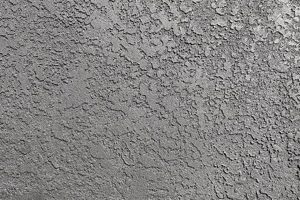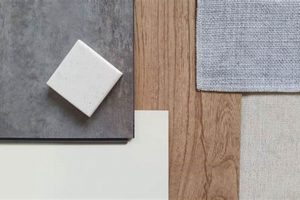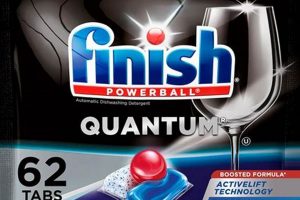A power tool designed for applying finishing materials, typically paints, stains, or lacquers, is utilized to achieve a smooth, even coat on surfaces. This type of spray gun is commonly employed in woodworking, carpentry, and furniture refinishing applications. For instance, it can be used to apply a clear coat to a wooden cabinet or to paint trim with a professional-looking result.
The utility of this equipment lies in its ability to provide a superior finish compared to traditional brush or roller application methods. It allows for greater control over material flow, reduces brush strokes, and can improve overall project efficiency. Historically, the technology behind this kind of sprayer has evolved significantly, improving atomization and reducing material waste. This evolution has led to more precise and environmentally conscious application techniques.
The subsequent sections will delve into the specifics of selecting a suitable sprayer, examining key features, addressing maintenance requirements, and discussing relevant safety precautions for optimal use and longevity.
Tips for Optimal Finishing Sprayer Performance
Maximizing the effectiveness and lifespan of a finishing sprayer requires adherence to certain best practices. The following tips outline key considerations for preparation, operation, and maintenance.
Tip 1: Material Preparation: Thoroughly thin the finishing material according to the manufacturer’s recommendations. Improper thinning leads to inconsistent spray patterns and potential clogging.
Tip 2: Nozzle Selection: Choose the correct nozzle size and type for the material being applied. Using an inappropriate nozzle results in poor atomization and an uneven finish. Consult the equipment manual for specific guidance.
Tip 3: Spray Technique: Maintain a consistent distance and angle from the surface being sprayed. An inconsistent distance results in runs or dry spots. Overlapping passes by approximately 50% ensures uniform coverage.
Tip 4: Pressure Regulation: Set the air pressure according to the manufacturer’s guidelines for the material and nozzle. Excess pressure causes overspray and material waste, while insufficient pressure leads to an uneven finish.
Tip 5: Filter Maintenance: Regularly clean or replace air and fluid filters to prevent clogging and maintain consistent performance. Blocked filters can significantly reduce spray quality and potentially damage the equipment.
Tip 6: Proper Cleaning: Immediately after use, thoroughly clean the sprayer components with the appropriate solvent. Failure to do so results in material buildup, which can impede future performance and reduce the equipment’s lifespan.
Tip 7: Storage Practices: Store the sprayer in a clean, dry environment to prevent corrosion and damage. Properly cleaned and lubricated components ensure the tool is ready for immediate use.
Adhering to these practices promotes optimal performance, extends the life of the equipment, and ensures a consistently high-quality finish. The following sections will address specific use cases and advanced techniques.
1. Atomization Technology
Atomization technology is a fundamental aspect of any finishing sprayer. Its efficacy directly impacts the quality of the applied finish, material usage, and overall efficiency. In the context of a finishing sprayer, understanding atomization is crucial for optimal performance.
- High Volume Low Pressure (HVLP) Systems
HVLP systems utilize a high volume of air at low pressure to atomize finishing materials. This reduces overspray and improves transfer efficiency. These systems are commonly found in finishing sprayers due to their ability to produce a fine, even finish while minimizing material waste. An example would be spraying a lacquer finish on furniture, where minimal overspray is desirable.
- Airless Systems
Airless systems atomize the material by forcing it through a small nozzle at high pressure. This generates a fine mist without the use of compressed air. Airless atomization offers greater material delivery rates and is suitable for thicker coatings. This is often utilized when applying primer to rough surfaces.
- Air-Assisted Airless Systems
These systems combine airless technology with compressed air for enhanced atomization and control. They deliver high material transfer efficiency with a superior finish quality. These systems are frequently used in automotive refinishing.
- Nozzle Design and Material
The design and material composition of the nozzle directly influence the atomization process. Different nozzle shapes and orifice sizes are designed for specific materials and application requirements. The material’s resistance to wear is also crucial for maintaining consistent atomization over time.
The selection of an appropriate atomization technology and corresponding nozzle is vital for achieving a desired finish. Different systems offer unique advantages and disadvantages, depending on the specific material and application. Understanding these nuances is crucial for any user of a finishing sprayer.
2. Pressure Consistency
Maintaining consistent pressure is a critical factor in the operation of a finishing sprayer. Fluctuations in pressure can directly impact the quality of the finish, the efficiency of material application, and the overall performance. Stable pressure ensures consistent atomization and prevents common finishing issues.
- Atomization Quality and Finish Uniformity
Consistent pressure directly influences the size and distribution of atomized particles. Insufficient pressure may lead to larger, uneven droplets resulting in a textured or orange-peel finish. Conversely, excessive pressure can cause excessive atomization, leading to overspray and material waste. Maintaining the manufacturer-recommended pressure for the specific finishing sprayer and material ensures a smooth, uniform finish.
- Material Flow Rate and Control
Stable pressure ensures a consistent flow rate of the finishing material. Variations in pressure will cause the flow rate to fluctuate, making it difficult to maintain a uniform application speed and thickness. This is particularly important when applying multiple coats, as inconsistent thickness can lead to visual imperfections and adhesion problems. Consistent flow rate helps maintain a wet edge and avoids striping and inconsistencies in the final layer.
- Spray Pattern and Coverage
Consistent pressure is crucial for maintaining a stable and predictable spray pattern. Pressure fluctuations can distort the spray pattern, leading to uneven coverage and potentially causing runs or dry spots. A consistent spray pattern allows for precise control over the application, reducing the risk of over-application in some areas and under-application in others, and ensuring even coverage.
- Equipment Longevity and Maintenance
Operating a finishing sprayer with consistent pressure contributes to the longevity of the equipment. Frequent pressure fluctuations can strain the sprayer’s components, such as the pump and nozzle, potentially leading to premature wear and tear or damage. Maintaining consistent pressure minimizes stress on the system and reduces the likelihood of malfunctions, such as clogging, ensuring the equipment operates efficiently for a longer period.
In conclusion, maintaining consistent pressure is paramount for achieving a high-quality finish and ensuring the efficient operation of a finishing sprayer. Stable pressure contributes to optimal atomization, consistent material flow, predictable spray patterns, and equipment longevity. Adhering to manufacturer recommendations for pressure settings and regularly monitoring and adjusting the pressure as needed are essential for achieving consistently satisfactory results.
3. Material Compatibility
Material compatibility is a critical determinant in the effective and safe operation of any finishing sprayer. The interaction between the components of the sprayer and the finishing material being applied directly affects the tool’s performance, lifespan, and the quality of the resulting finish. Understanding this relationship is paramount for achieving professional results and avoiding costly equipment failures.
- Solvent Resistance of Components
Finishing materials often contain solvents that can degrade or dissolve the plastic and rubber components of a sprayer. Using incompatible materials results in swelling, cracking, or complete failure of seals, hoses, and other critical parts. For instance, spraying lacquer with a sprayer not rated for lacquer solvents leads to rapid deterioration of internal components and potential equipment malfunction. Sprayers intended for water-based finishes may not be resistant to the stronger solvents in lacquer, enamel, or epoxy coatings. The specification sheets for both the sprayer and the finishing material should be consulted to verify compatibility.
- Viscosity Requirements and Sprayer Design
The viscosity, or thickness, of a finishing material affects the sprayer’s ability to atomize and apply the coating effectively. High-viscosity materials require sprayers with larger nozzle orifices and more powerful atomization capabilities. Conversely, thin materials require smaller nozzles and lower pressures. Using a sprayer designed for low-viscosity materials to apply a thick paint results in poor atomization, uneven coverage, and potential clogging. The sprayer’s design, including its pressure rating and nozzle options, must be appropriate for the viscosity range of the intended finishing materials.
- Chemical Reactivity and Contamination
Certain finishing materials react chemically with each other or with residue left in the sprayer from previous use. This can lead to clumping, gelling, or the formation of undesirable byproducts that affect the finish quality. For example, mixing a water-based coating with a solvent-based coating in the sprayer causes the water-based material to coagulate. Thorough cleaning of the sprayer between uses and adherence to the manufacturer’s recommendations regarding compatible materials are crucial to prevent chemical reactions and contamination.
- Corrosion Resistance and Material Type
Some finishing materials, particularly those containing acids or alkalis, are corrosive to certain metals. Using a sprayer with components made from incompatible metals leads to corrosion, which damages the sprayer and potentially contaminates the finishing material. For example, spraying a marine paint containing strong anti-fouling agents with a sprayer that has non-resistant aluminum components results in corrosion and potential failure of the equipment. Sprayers designed for corrosive materials feature components made from stainless steel or other corrosion-resistant alloys.
These facets illustrate the critical importance of material compatibility in the context of finishing sprayers. Selecting a sprayer that is specifically designed for the type of finishing materials being used ensures optimal performance, extends the equipment’s lifespan, and promotes a high-quality finish. Failure to consider material compatibility results in equipment damage, inconsistent results, and potential safety hazards. Therefore, a thorough understanding of material properties and sprayer specifications is essential for all users.
4. Maintenance Schedule
The operational lifespan and performance consistency of a finishing sprayer are directly contingent upon adherence to a structured maintenance schedule. Neglecting regular upkeep precipitates diminished spray quality, potential equipment malfunctions, and ultimately, a reduced service life. This principle applies universally to finishing sprayers, regardless of brand or model, but the specifics of the maintenance schedule are dictated by the individual characteristics of the tool in question.
A rigorous maintenance schedule for a finishing sprayer encompasses several key procedures. These procedures include the systematic cleaning of all fluid passages after each use, the periodic replacement of filters to prevent clogging, and the lubrication of moving parts to ensure smooth operation. Furthermore, the inspection of hoses and connections for leaks or damage is essential for maintaining consistent pressure and preventing material wastage. Failing to thoroughly clean a sprayer after applying a paint that dries quickly, such as lacquer, often leads to nozzle blockages and requires extensive disassembly for remediation. Similarly, the prolonged use of a sprayer with a clogged air filter reduces its atomization efficiency and puts undue strain on the motor. Such scenarios demonstrate the cause-and-effect relationship between adherence to a maintenance schedule and the reliable performance of the tool. Therefore, understanding the specific maintenance requirements outlined in the manufacturer’s documentation is paramount.
In summary, a well-defined and consistently followed maintenance schedule is not merely a recommendation but a prerequisite for the longevity and optimal functioning of a finishing sprayer. Consistent maintenance mitigates the risk of costly repairs, ensures consistent finish quality, and maximizes the return on investment. The consequences of neglecting maintenance are readily observable in diminished performance and equipment failure, underscoring the practical significance of this often-overlooked aspect of tool ownership.
5. Nozzle Variety
The performance of a finishing sprayer is intrinsically linked to the selection and utilization of appropriate nozzles. Nozzle variety, within the context of a finishing sprayer, addresses the range of nozzle types available, each designed for specific materials, application methods, and desired finish characteristics. The nozzle directly influences atomization, spray pattern, and material flow, collectively determining the quality and efficiency of the finishing process. The absence of suitable nozzle options limits the versatility of a spray gun, restricting its application to a narrow range of tasks. For instance, attempting to spray thick latex paint with a nozzle designed for thin lacquer results in poor atomization, uneven coverage, and potential equipment clogging. The availability of diverse nozzles, each optimized for specific coating types, is thus a critical component of the equipment’s utility.
Different nozzles offer distinct spray patterns, ranging from narrow fan patterns for detail work to wide fan patterns for large surface coverage. Orifice size dictates the material flow rate and is matched to the viscosity of the coating being applied. Some nozzles incorporate air caps that further shape the spray pattern and improve atomization. Consider the application of a clear coat to intricate woodworking: A fine-finish nozzle with a narrow spray pattern and low flow rate provides precise control, minimizing overspray and achieving a smooth, even finish. Conversely, applying a primer to a large wall benefits from a wide fan nozzle with a higher flow rate to cover the area efficiently. The ability to interchange nozzles allows the user to adapt the sprayer to varying project requirements, enhancing both efficiency and quality.
In essence, nozzle variety is a pivotal attribute affecting the functionality and performance of a finishing sprayer. Recognizing the relationship between nozzle design and the characteristics of various finishing materials enables the user to optimize the application process, achieving consistent, professional results across a range of projects. Investing in a sprayer system with an extensive nozzle selection enhances its adaptability and extends its usability, ultimately contributing to greater efficiency and superior finishing outcomes.
6. User Safety
The safe operation of a finishing sprayer is paramount, influencing not only the user’s well-being but also the quality of the finished product and the lifespan of the equipment. Understanding the safety aspects associated with such a tool is crucial before undertaking any finishing project.
- Respiratory Protection
Finishing materials often contain volatile organic compounds (VOCs) and other hazardous substances that can be harmful if inhaled. Prolonged exposure can lead to respiratory irritation, long-term health issues, or even systemic poisoning. Therefore, the consistent use of a NIOSH-approved respirator with appropriate filters is essential during operation. The selection of the correct respirator depends on the specific materials being sprayed, as different filters are required for different chemicals. Neglecting respiratory protection poses a significant health risk.
- Eye and Skin Protection
Finishing materials can cause irritation or damage to the eyes and skin upon contact. Splatter, overspray, or accidental spills can result in chemical burns, dermatitis, or other adverse reactions. Wearing safety glasses or a face shield and protective gloves is crucial for preventing these injuries. The type of gloves should be selected based on the chemical resistance properties required for the specific materials being used. The lack of adequate eye and skin protection constitutes a significant safety oversight.
- Ventilation and Fire Safety
Many finishing materials are flammable or explosive, particularly when atomized into a fine mist. Poor ventilation allows the concentration of flammable vapors to build up, increasing the risk of fire or explosion. Operating the sprayer in a well-ventilated area or using a spray booth with adequate exhaust is essential. Eliminating potential ignition sources, such as open flames, sparks, or static electricity, is also crucial. Failure to ensure proper ventilation and fire safety measures creates a hazardous working environment.
- Equipment Maintenance and Inspection
A malfunctioning sprayer poses a significant safety risk. Worn or damaged hoses, loose connections, or faulty electrical components can lead to material leaks, electrical shocks, or equipment failure. Regularly inspecting the sprayer for signs of wear or damage and performing routine maintenance, as recommended by the manufacturer, is crucial for preventing accidents. Addressing any issues promptly ensures safe operation. Neglecting equipment maintenance and inspection increases the likelihood of malfunctions and associated hazards.
These safety facets are not merely recommendations but fundamental requirements for the responsible operation of a finishing sprayer. Adherence to these guidelines minimizes the risk of injury, protects the user’s health, and contributes to a safer working environment. The commitment to safety should be an integral part of any finishing project.
Frequently Asked Questions Regarding Finishing Sprayers
The following addresses common inquiries concerning finishing sprayers, offering concise answers to ensure proper usage and maintenance.
Question 1: What is the appropriate air pressure for optimal atomization using a finishing sprayer?
The correct air pressure varies depending on the material’s viscosity and the sprayer’s nozzle size. Consult the manufacturer’s recommendations for both the finishing material and the sprayer. Exceeding the recommended pressure can result in overspray, while insufficient pressure leads to an uneven finish.
Question 2: How frequently should the filters of a finishing sprayer be cleaned or replaced?
Filters should be inspected and cleaned after each use and replaced when exhibiting signs of clogging or damage. The frequency of replacement depends on the volume and type of materials sprayed. Blocked filters impede proper atomization and can damage the sprayer.
Question 3: What type of personal protective equipment is required when operating a finishing sprayer?
A NIOSH-approved respirator with appropriate filters, safety glasses or a face shield, and solvent-resistant gloves are essential. The respirator protects against inhalation of harmful vapors, while eye and skin protection prevents direct contact with finishing materials.
Question 4: Which solvents are suitable for cleaning a finishing sprayer after use?
The appropriate solvent depends on the type of finishing material used. Consult the material’s safety data sheet (SDS) for recommended cleaning solvents. Using an incompatible solvent can damage the sprayer’s components.
Question 5: How can overspray be minimized when using a finishing sprayer?
Utilize a spray technique that involves consistent distance and angle from the surface. Adjust air pressure and material flow according to manufacturer guidelines. Select a nozzle size appropriate for the material. Employing HVLP (High Volume Low Pressure) technology also reduces overspray.
Question 6: What are the common causes of an uneven finish when using a finishing sprayer?
Inconsistent spray technique, incorrect air pressure, improper material thinning, and a clogged or worn nozzle can all contribute to an uneven finish. Identifying and addressing these factors is crucial for achieving a smooth, consistent result.
Proper adherence to these principles ensures optimal performance and extends the lifespan of the equipment, resulting in consistently high-quality finishes.
The subsequent section will elaborate on advanced techniques and troubleshooting strategies for finishing sprayers.
Conclusion
This exploration has detailed numerous critical aspects of a specific type of finishing sprayer. Elements such as atomization technology, pressure consistency, material compatibility, diligent maintenance schedules, diverse nozzle options, and stringent user safety protocols have been examined. These facets collectively determine the efficacy and longevity of such equipment, influencing the quality of the resultant finish.
The proper implementation of these considerations ensures optimal performance and minimizes potential hazards. A thorough understanding of these principles enables informed decision-making, ultimately contributing to superior finishing outcomes and a more secure working environment. Continued adherence to manufacturer guidelines and best practices is essential for realizing the full potential of a “pistola de finish dewalt”.







